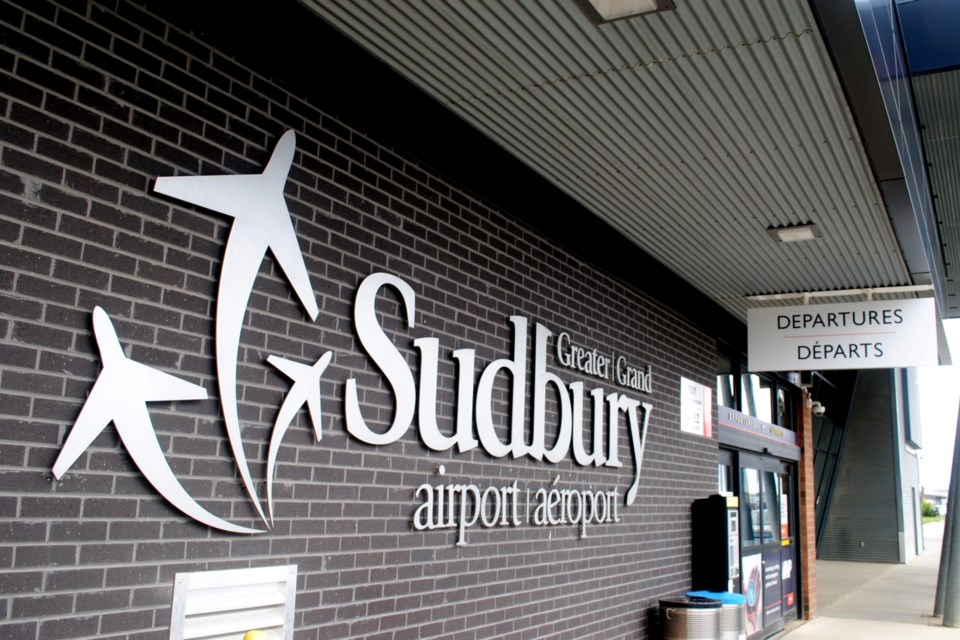Recovery from the COVID-19 pandemic has been slow-going at Northern Ontario airports, prompting their leadership to band together by drafting an open letter to three federal ministers.
The letter has been signed by Greater Sudbury Airport CEO Giovanna Verrilli and leadership from fellow Northern Ontario airports in Timmins, North Bay and Sault Ste. Marie.
“The regional sector is continuing to face significant current and future uncertainties as well as ruinous challenges; we are glad to see the demand for travel is not one of them,” according to the letter, which estimates the four airports contribute a GDP of $300 million.
In the letter, the Northern Ontario airport leaders request the federal government reinstate the Regional Air Transportation Initiative, or a similar such program to “prioritize support for regional airports and directly invest in the critical operations of these airports.”
They request a minimum federal investment of $1 million per airport annually for the next four years.
Greater Sudbury Airport marketing and airport development director Jean-Mathiew Chénier told Sudbury.com that the key issue they have right now is with finding enough employees.
“The demand for travel is there,” he said, adding that with COVID-related shutdowns and reductions in travel, many people left the field of employment.
“The training pipeline, for pilots in particular, is pretty long,” Chénier said. “It takes months and many, many hours of flight time and training before they can start flying commercial aircraft.”
Airlines have prioritized staffing larger centres because it’s more economically viable to put crews on overseas flights to Europe than flights to and from Greater Sudbury and other northern communities, which carry far fewer passengers.
“It's not for lack of aircraft, it's not enough people, whether it's the pilot, flight attendants, to the people loading and offloading baggage to fueling the aircraft,” he said, adding the “whole ecosystem” has been “severely impacted.”
Despite these challenges, Chénier said things are beginning to turn around.
Last year, passenger traffic in Greater Sudbury hit approximately 110,000, which is roughly double the 54,251 recorded in 2021, but still less than half the 245,722 passengers recorded in the pre-pandemic year of 2019.
In January 2022, they recorded approximately 4,700 passengers, whereas January of this year netted around 10,000 passengers.
Meanwhile, Chénier said the airport’s finances are nearing fiscal black. Although waiting on audited financial statements to return before going into specifics with local media, he said, “We came pretty close to breaking even in 2022.”
This short-term fiscal stability carries the consequence of putting off needed capital projects, which he said they can only do for so long.
During the pandemic, the Greater Sudbury Airport received approximately $4.5 million in federal funding to help weather the storm, Chénier said. This, in addition to $2.6 million announced last year for various infrastructure projects, including the replacement of incandescent lights along runways with LED lights.
While major airports have largely bounced back by hitting 90 per cent of pre-pandemic aircraft movement, the letter to federal ministers notes that smaller airports such as those in Northern Ontario remain on a slower road to recovery.
“Presently our communities have an average seat capacity that is 55 per cent of our 2019 totals, representing underserved markets and greatly reduced connectivity which negatively affects our communities,” according to the letter.
“This situation isn't forecasted to improve much if at all through the remainder of this year and into next. Even then any improvement will be gradual and still won't address the challenges at hand today.”
The federal ministers sent the letter include Tourism Minister Randy Boissonnault (who also serves as associate minister of Finance), Patty Hajdu (minister responsible for the Federal Economic Development Agency for Northern Ontario), and Transport Minister Omar Alghabra.
Tyler Clarke covers city hall and political affairs for Sudbury.com.
